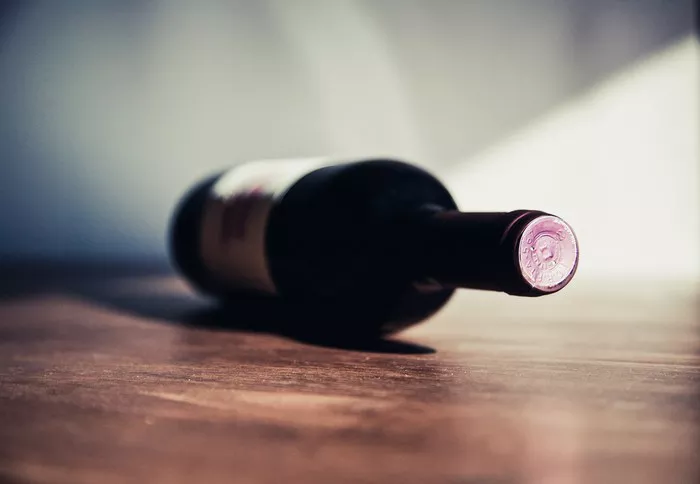Sparkling wine, with its effervescent charm, is a delightful beverage often associated with celebrations and special occasions. But how long does this bubbly elixir maintain its quality and flavor? In this article, we’ll delve into the factors that influence the shelf life of sparkling wine and provide insights on proper storage techniques.
1. The Influence of Variety and Quality
Types of Sparkling Wine: Different types of sparkling wine, such as Champagne, Prosecco, and Cava, have varying aging potentials. For instance, high-quality Champagnes tend to age gracefully for a longer period compared to more casual sparkling wines.
Quality of Production: Well-crafted sparkling wines with meticulous attention to detail in both grapes and production methods tend to have a longer potential lifespan.
2. The Role of Acidity and Sugar Content
Balanced Acidity: Sparkling wines with a well-balanced acidity level are more likely to age gracefully. Acidity acts as a preservative, helping to maintain the wine’s freshness over time.
Sugar Levels: Sweeter sparkling wines tend to have a shorter shelf life compared to drier varieties. The higher sugar content can accelerate the aging process.
3. Proper Storage Conditions
Temperature Stability: Consistent and moderate temperatures are crucial for preserving the quality of sparkling wine. Ideally, wines should be stored between 45-65°F (7-18°C) to prevent premature aging.
Avoidance of Light and Vibration: Exposure to light, especially UV rays, can be detrimental to wine. Additionally, vibrations can disturb the aging process, potentially altering the flavor profile.
Humidity Control: A relative humidity level of around 70% helps prevent corks from drying out and allows the wine to age gracefully.
4. Positioning and Orientation
Horizontal Storage: Storing sparkling wine bottles on their sides ensures that the cork remains in contact with the wine, keeping it moist and preventing air from seeping in.
5. Determining Optimal Aging Periods
Vintage vs. Non-Vintage: Vintage sparkling wines are typically aged longer before release, often resulting in a longer potential lifespan. Non-vintage varieties are typically best enjoyed within a few years of release.
Personal Preferences: Some individuals prefer the freshness and vibrancy of young sparkling wine, while others appreciate the complexity that comes with aging.
6. Recognizing Signs of Aging
Aroma and Flavor Changes: As sparkling wine ages, it may develop richer, more nuanced aromas and flavors. However, if the wine starts to exhibit off-flavors or aromas, it may have passed its peak.
Effervescence: Over time, the bubbles in sparkling wine may become less pronounced. While this is natural, excessive loss of effervescence can be a sign of aging.
By considering these aspects, you can make informed decisions about how long to keep your sparkling wine and when it’s best enjoyed. Remember, while proper storage can extend the lifespan of sparkling wine, there’s no substitute for the joy of savoring it at its peak
FAQs about the shelf life and storage of sparkling wine:
1. How long does sparkling wine last once it’s opened?
Once opened, sparkling wine can typically retain its quality for 1 to 3 days if properly sealed and refrigerated. Using a wine stopper to preserve the bubbles is recommended.
2. Can sparkling wine improve with age, like some still wines?
Yes, certain high-quality sparkling wines, especially vintage varieties, can improve with age, developing more complex flavors and aromas. However, most non-vintage sparkling wines are best enjoyed relatively young.
3. Is it necessary to store sparkling wine on its side like still wine?
Storing sparkling wine on its side is generally recommended to keep the cork moist and maintain a proper seal. This helps preserve the effervescence and prevents the cork from drying out.
4. Can you store sparkling wine vertically if needed?
While storing sparkling wine vertically is not ideal, it won’t necessarily ruin the wine. However, it’s best to store it horizontally when possible to ensure the cork remains moist.
5. What is the ideal serving temperature for sparkling wine?
The ideal serving temperature for sparkling wine is between 45-55°F (7-13°C). Slightly cooler temperatures enhance the crispness and effervescence.
6. Can sparkling wine go bad if stored incorrectly?
Yes, improper storage conditions, such as exposure to heat, light, or fluctuations in temperature, can lead to spoilage and negatively impact the flavor and quality of sparkling wine.
7. How can I tell if my sparkling wine has gone bad?
Signs of a spoiled sparkling wine include off-putting aromas (like wet cardboard or vinegar), flat or excessive loss of bubbles, and unpleasant taste. Always perform a sensory evaluation before consuming.
8. What is the difference between vintage and non-vintage sparkling wine?
Vintage sparkling wines are made from grapes harvested in a specific year and are typically aged longer before release, resulting in unique and nuanced flavors. Non-vintage wines are blends of multiple vintages and are designed for consistent quality.
9. Can you age inexpensive sparkling wine, or is it best to drink it soon after purchase?
Inexpensive sparkling wines are generally designed for immediate consumption and may not significantly benefit from aging. It’s best to enjoy them relatively young.


